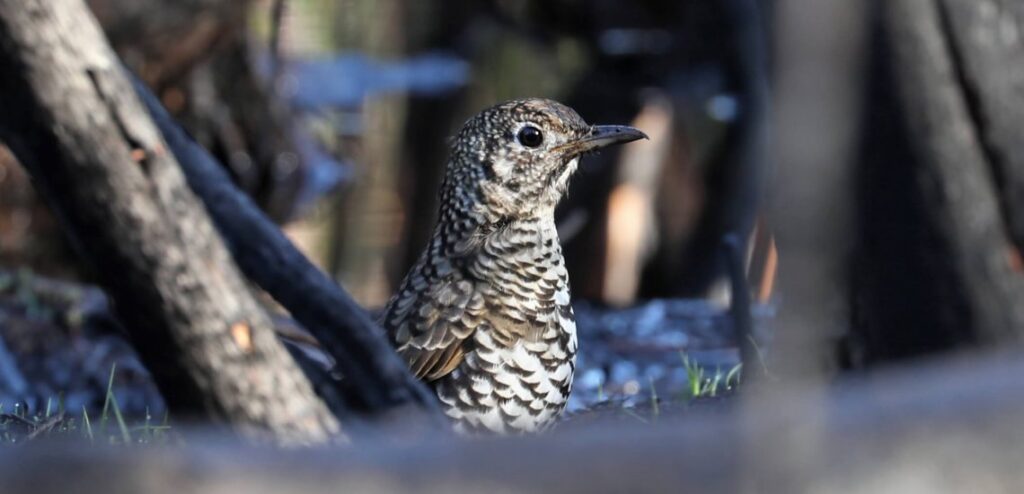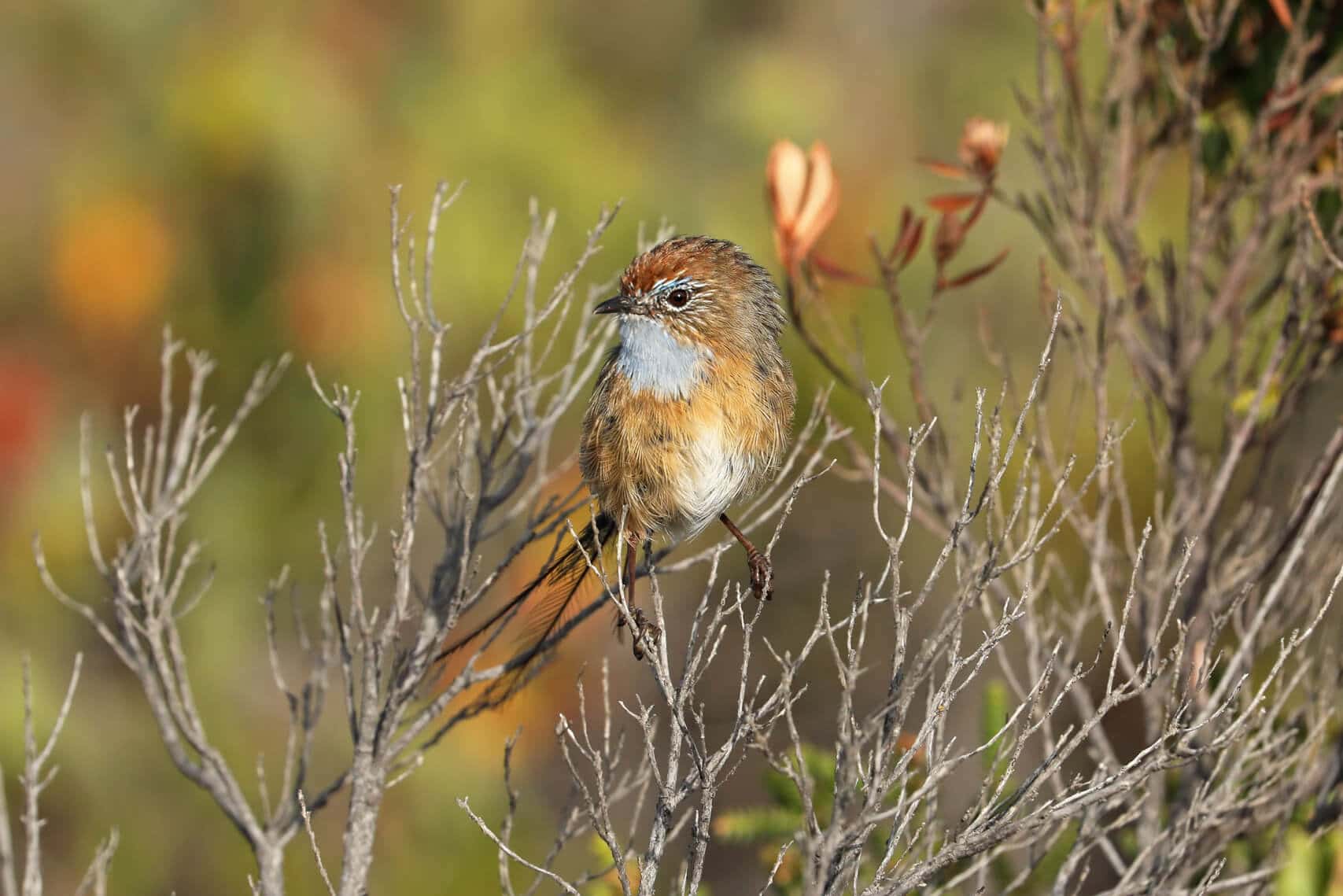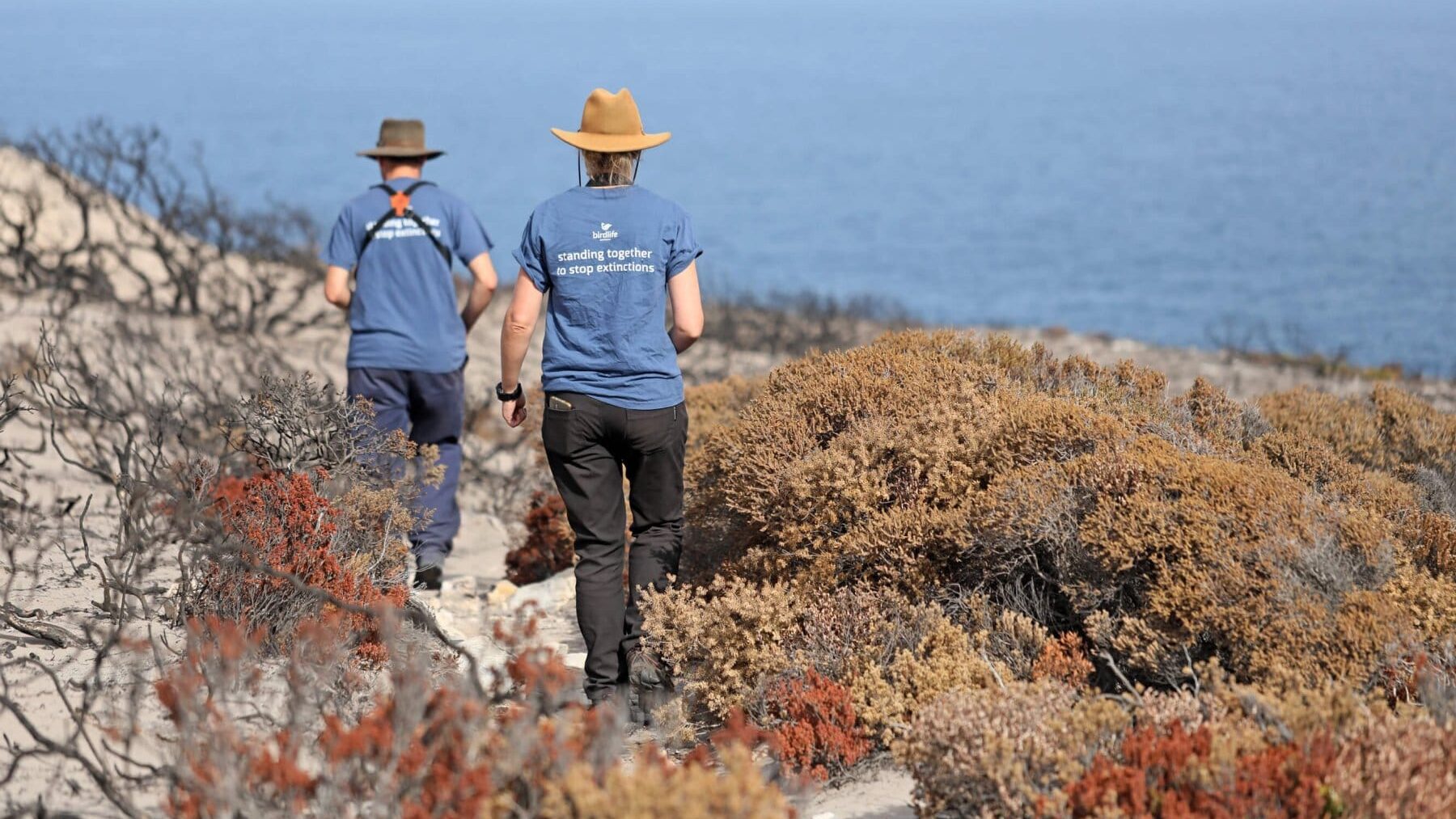Australian bushfire update: hope from the ashes of Kangaroo Island

We all remember the devastation wreaked by the Australian bushfires in early 2020. But what’s been happening since then? Find out about just one of the many wildlife havens BirdLife Australia is helping to restore, thanks to the generosity of BirdLife supporters.
By BirdLife Australia Preventing Extinctions team
Just over a year ago, catastrophic wildfires severely burned almost half of Kangaroo Island off the coast of South Australia. The devastation impacted around 95% of its national park, conservation park and wilderness areas located on the west end of the island. In that moment of crisis, donors from across the world stepped up to support the surviving birds – many of them unique to the island – providing critical resources for BirdLife Australia’s mission to prevent extinctions. One year on, with gratitude to you for your generosity, BirdLife Australia is pleased to share the following exciting updates on our work on Kangaroo Island.
In the immediate aftermath of the fires, BirdLife Australia ecologist Janelle Thomas was among 80 wildlife experts from across government, academia and conservation groups who, joined by the island’s residents, gathered to develop a Kangaroo Island Bushfire Response Plan. BirdLife Australia helped inform the government’s conservation and recovery efforts by identifying the biggest post-fire threats to birds and providing strategies to best support their recovery. We also got straight into work on the ground, undertaking rapid-assessment surveys within the fire scar in collaboration with South Australia’s Department of Environment and Water, to determine the impact of the fire on birds and find survivors.
Those initial surveys, together with early mapping and analysis by BirdLife Australia, made the extent of the devastation clear. Fifteen birds unique to the island had lost between 30% – 80% of their habitats. But the findings also gave reason to hope for recovery: 2,600 birds across 77 species were spotted alive, including three of Kangaroo Island’s flagship species: the Southern Emu-wren Stipiturus malachurus, Western Whipbird Psophodes nigrogularis and Bassian Thrush Zoothera lunulata.

While we were certainly heartened to find birds surviving in unburnt vegetation amid the fire scar, monitoring and research is required to understand how long birds are able to persist in these (often small) patches of habitat, and how long until they can use regrown vegetation for food, breeding, and shelter. As fires and other types of habitat destruction continue to force wildlife into ever-smaller pockets of wilderness, this research will be crucial to supporting bird survival into the future.
In the months since those initial surveys, our efforts have been focused on investing in our conservation capacity and developing an island-wide community bird monitoring program. Last November, Caroline Paterson joined BirdLife Australia as our Kangaroo Island Bushfire Recovery Project Officer. As long-time resident with an expert knowledge of the island’s wildlife, Caroline has done a fantastic job of bringing the Kangaroo Island community into bird conservation. Last month she hosted BirdLife Australia’s community workshop for an enthusiastic audience of around 60 residents. Notably, this workshop was the first time since the fires that the Kangaroo Island community was given a comprehensive, first-hand account of the recovery work being carried out on the Island, and information on how to get involved.
Caroline has also launched 80+ monitoring sites representing different vegetation types across the Island. This will help provide information vital to our understanding of where different species occur, as well as allowing us to keep a close eye on the population health of priority endemic birds over time. Critically, they will provide the hard scientific data necessary to tell us which birds need targeted conservation action to ensure their survival into the future.

Information collected from these survey sites is already being used to save birds. Survey records are feeding into a Fire Plan currently being developed by Department of Environment and Water to not only reduce the risk of wildfire, but to develop strategies for protecting wildlife in the event of another fire. In addition, our data are informing predator control and habitat enhancements that will support the recovery of endemic species. Closely surveying birds also enables BirdLife Australia to perform emergency interventions when needed, such as our work last February to help relocate six surviving Southern Emu-wrens to a larger, healthier patch of vegetation that could better support them.
Looking to the future, BirdLife Australia is seeking to leverage the results of this monitoring program into an island-wide Conservation Action Plan for the long-term recovery of priority birds on Kangaroo Island. The plan will help to provide a clear framework for conservation action and formalise our collaborations with stakeholders.
A wide variety of organisations and partners are currently involved in conservation on Kangaroo Island, from government to universities to environmental organisations and landowners. This presents a fantastic opportunity for the Island, as we combine our joint expertise and resources. BirdLife Australia has been collaborating with other organisations to promote the free exchange of information and ensure our current and future efforts are coordinated and complementary, all with the aim of providing the best possible outcomes for Kangaroo Island’s birds.
The challenge ahead is steep, to be sure. For populations to recover, birds will need to persist in small numbers in unburnt areas until the surrounding vegetation regenerates, which could take many months or years. Climate change, overgrazing, predation and competition for resources will only compound the challenges of survival. Thanks to you, these birds are supported by a dedicated team of experts determined to ensure their future.
Stay up to date
Sign up to receive the latest bird conservation news. You’ll also receive updates about our projects, science and other ways to get involved including fundraising.
Thank you for your support, we are committed to protecting your personal information and privacy. For more information on how we use your data, please see our Privacy Policy. You can unsubscribe from emails at any time by using the link in the footer of any email from us.

